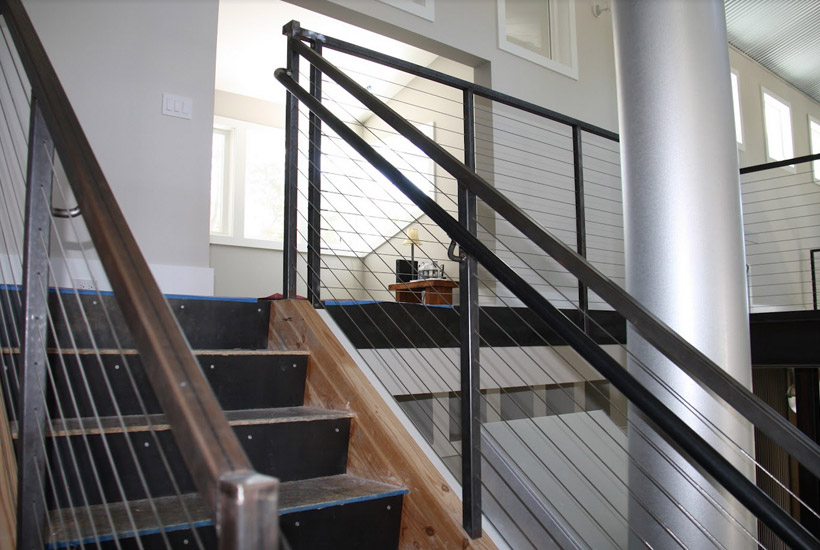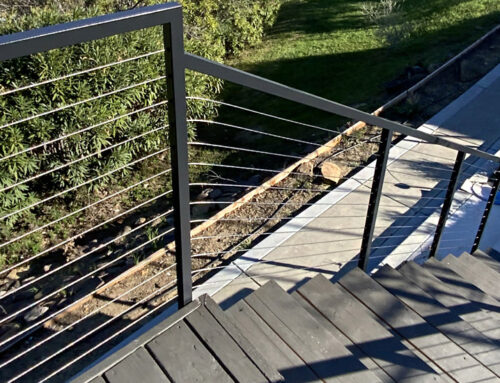In California, the height of your indoor stair railings, and several other aspects of them, is tightly regulated both by the state’s building codes and also by your own local government’s codes. If you are getting a new railing for inside of your home, it is important for you, and the professional you work with, to be aware of these regulations. We’ll explain the requirements for stair railing height, and some other code requirements, below.
When Are Stair Railings Required?
That depends on the stairs themselves. Inside of a single-family dwelling, California building code requires that you have a railing for any staircase which has four or more stair risers. If you’re unfamiliar with that term, you can think of the riser as the step. If you have four or more steps, you need a railing. This means that some sunken living rooms and short staircases in the home don’t need railings.
Stair Railing Height Requirements
California building code specify a height for your stair railing. They must be from 34 to 38 inches above the nosing of the stair. The nosing is essentially the part of the stair you step on. The horizontal surface where you’d put your foot. The railing’s height has to consistently rise to match the increasing height of the nosing as you move up the stairs. Railings must also run the entire length of the stairs.
There are also minimum width clearance requirements for stairs, and handrails must not impinge on this minimum width. In most circumstances the minimum width for a home is 36 inches. However, the widths are determined by occupancy, so if your building is intended for more people, then you may need to have a wider staircase, and then be aware of that increased width when the railing is installed.
Keep in mind that the handrail must be at least one and half inches away from the wall, but also not project more than three and a half inches into the staircase. These widths need to be kept in mind in order to ensure the overall width of the staircase is still maintained.
Other Stair Railing Requirements
Speaking of width, another important stair requirement is that for additional railings when the stairs are too wide. The idea is that people need a railing to grab on every 88 inches. So, if your home’s railing is wider than this, you’ll need another railing down the center to give people in the middle something to hold onto. It’s rare for a home to have a staircase this wide, but it is possible.
There are also weight requirements. In order to be safe a railing needs to be able to handle a certain amount of weight. The California Building Code requires that weight to be 200 pounds in any direction. That means it should be able to hold back 200 pounds pushed against it sideways, or applied downwards.
When you’d in doubt about whether your new railing design will meet building codes it is a good idea to reach out to railing professionals to be sure.






